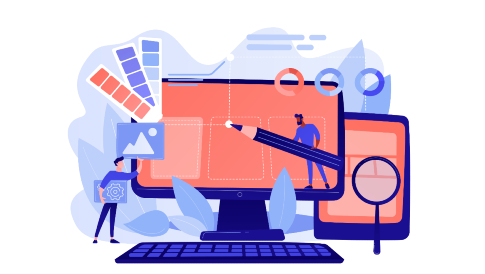Creating your first website can be an exciting yet challenging endeavor. As a beginner in web design, you may encounter various obstacles that can make the process seem overwhelming. However, with the right guidance and a systematic approach, you can overcome these challenges and craft stunning websites that leave a lasting impression. In this comprehensive guide, we will explore the common challenges novice web designers face and provide practical solutions and tips to help you navigate the world of web design for beginners successfully. Whether you’re looking for guidance on design principles or seeking an honest customwrititngs.com review to assist with your academic tasks, we’ve got you covered.
Choosing the Right Design Tools
One of the initial challenges beginners face is selecting the appropriate design tools. The market offers a plethora of design software and platforms, each with its own learning curve. Researching and choosing tools that align with your project’s requirements and skill level is essential. Popular options include Adobe XD, Figma, and Canva, which offer user-friendly interfaces and plenty of online tutorials.
Understanding User Experience (UX) Principles
Creating a visually appealing website is only part of the equation. User experience plays a pivotal role in the success of your design. Many beginners overlook the importance of user-friendly navigation, clear call-to-action buttons, and responsive layouts. Familiarize yourself with UX principles by reading books, taking online courses, or participating in web design communities to receive feedback on your work.
Web Design for Beginners: Balancing Creativity and Functionality
While it’s tempting to go all out with creative design elements, it’s crucial to strike a balance between creativity and functionality. An overly complex design can confuse users and hinder their ability to navigate your site. Start with a clean and intuitive layout, and then gradually incorporate creative elements to enhance the user experience.
Mobile Responsiveness
With the increasing use of smartphones and tablets, ensuring your website is mobile-responsive is non-negotiable. Beginners often struggle with making their designs adapt seamlessly to various screen sizes. To address this challenge, utilize responsive design frameworks like Bootstrap or Flexbox. Regularly test your website on different devices to ensure it functions flawlessly.
Browser Compatibility
Another challenge is making your website compatible with various web browsers. What works perfectly in one browser may display differently in another. To overcome this challenge, test your website on multiple browsers and use CSS prefixes and compatibility libraries when necessary. Tools like BrowserStack can help you identify and fix compatibility issues.
Content Organization
Organizing content effectively is a significant hurdle for beginners. It’s essential to create a clear information hierarchy and ensure that users can easily find what they’re looking for. Utilize headings, subheadings, and concise paragraphs to structure your content logically. Implementing a user-friendly navigation menu can also simplify content access.
Slow Loading Speed
A slow-loading website can deter visitors and impact your search engine rankings. Beginners often struggle with optimizing images and reducing unnecessary code. Use compression tools like TinyPNG for images and minimize code through techniques like minification. Additionally, consider using content delivery networks (CDNs) to speed up load times.
Seeking Feedback and Continuous Learning
One of the most valuable strategies for overcoming web design challenges is seeking feedback from experienced designers and peers. Join web design communities, participate in forums, and share your work for constructive criticism. Embrace the mindset of continuous learning, as web design is an ever-evolving field with new trends and technologies emerging regularly.
Web Design for Beginners: Staying Inspired and Motivated
Web design can be a demanding and occasionally frustrating pursuit, especially when faced with creative blocks. To combat this, explore design inspiration websites, follow industry blogs, and attend design conferences or webinars. Surrounding yourself with a supportive community can keep you motivated and help you stay updated on the latest design trends.
The Importance of Patience and Practice
Finally, remember that mastering web design takes time and practice. Be patient with yourself and your progress. Start with small projects and gradually work your way up to more complex ones. Consistent practice will hone your skills and build your confidence as a web designer.
Web Design for Beginners – Conclusion
As a beginner in web design, you are bound to encounter challenges along the way. However, by choosing the right design tools, understanding UX principles, balancing creativity and functionality, addressing mobile responsiveness, ensuring browser compatibility, organizing content effectively, optimizing loading speed, seeking feedback, staying inspired, and practicing patience, you can overcome these obstacles and create stunning websites that showcase your growing expertise.
Web design is a dynamic and rewarding field, and each challenge you overcome brings you one step closer to becoming a proficient designer. Embrace the learning process, stay curious, and continue refining your skills. With determination and a willingness to learn, you can turn your web design struggles into opportunities for growth and creative expression. And remember, when faced with academic tasks like research proposals, don’t forget to choose the best research proposal writing service to ensure your academic success.Начало формы
